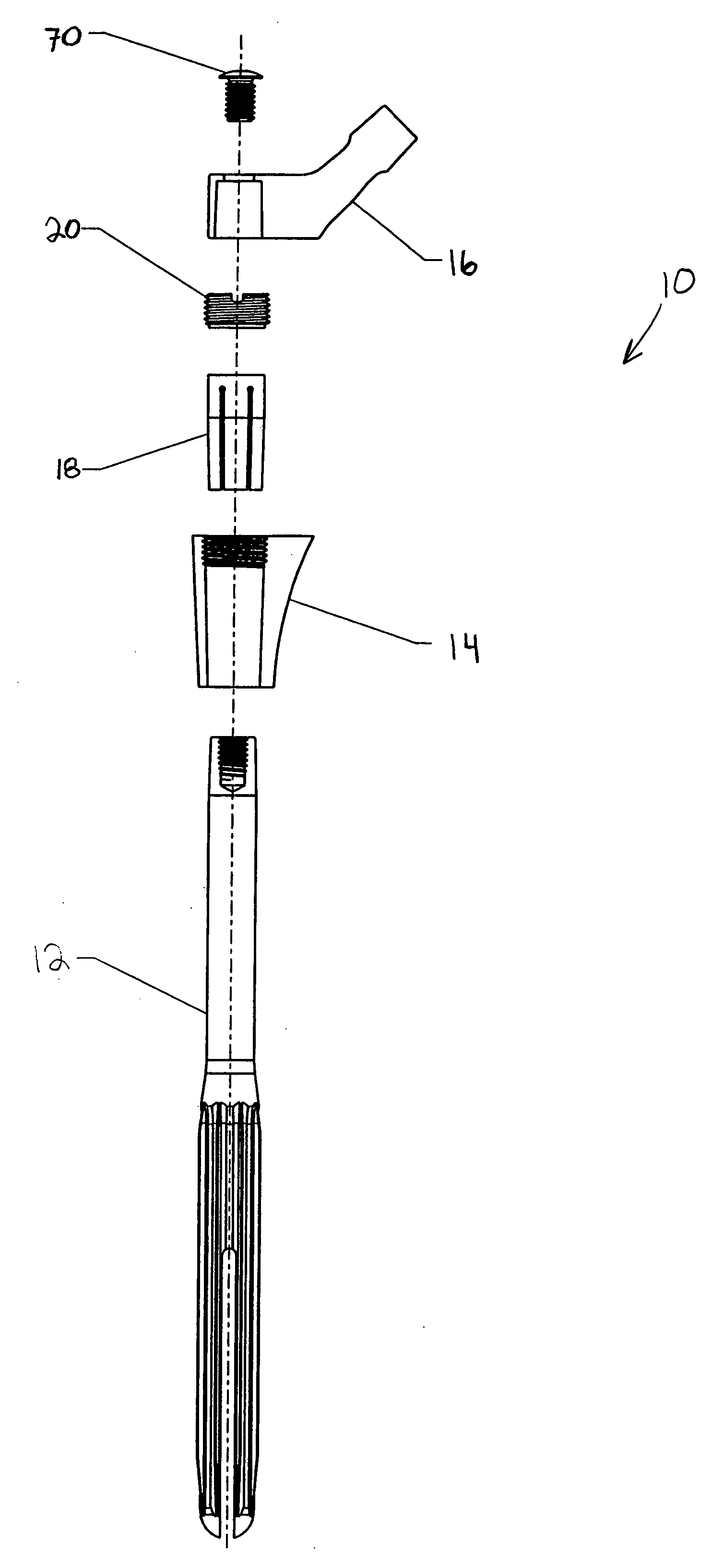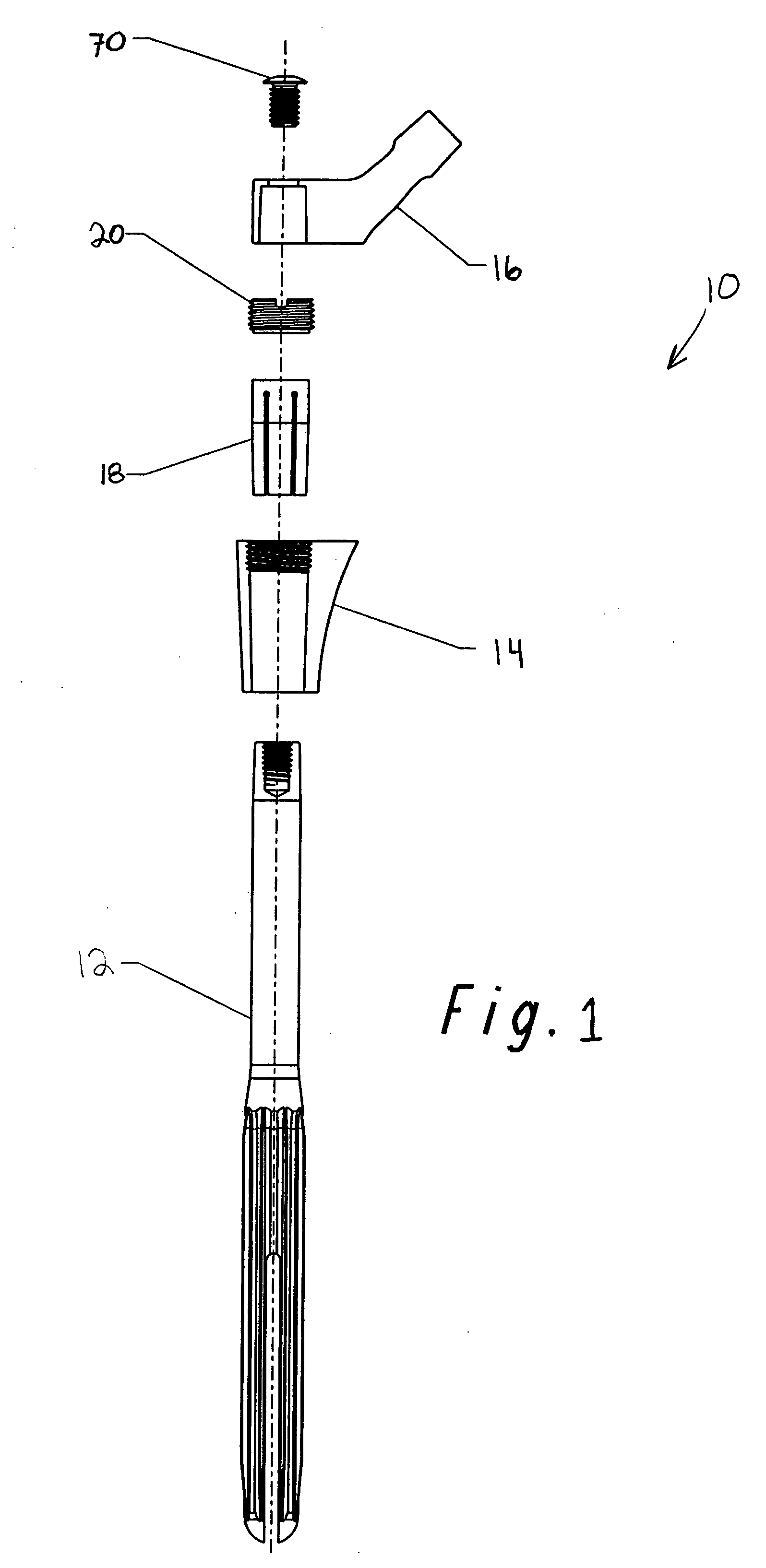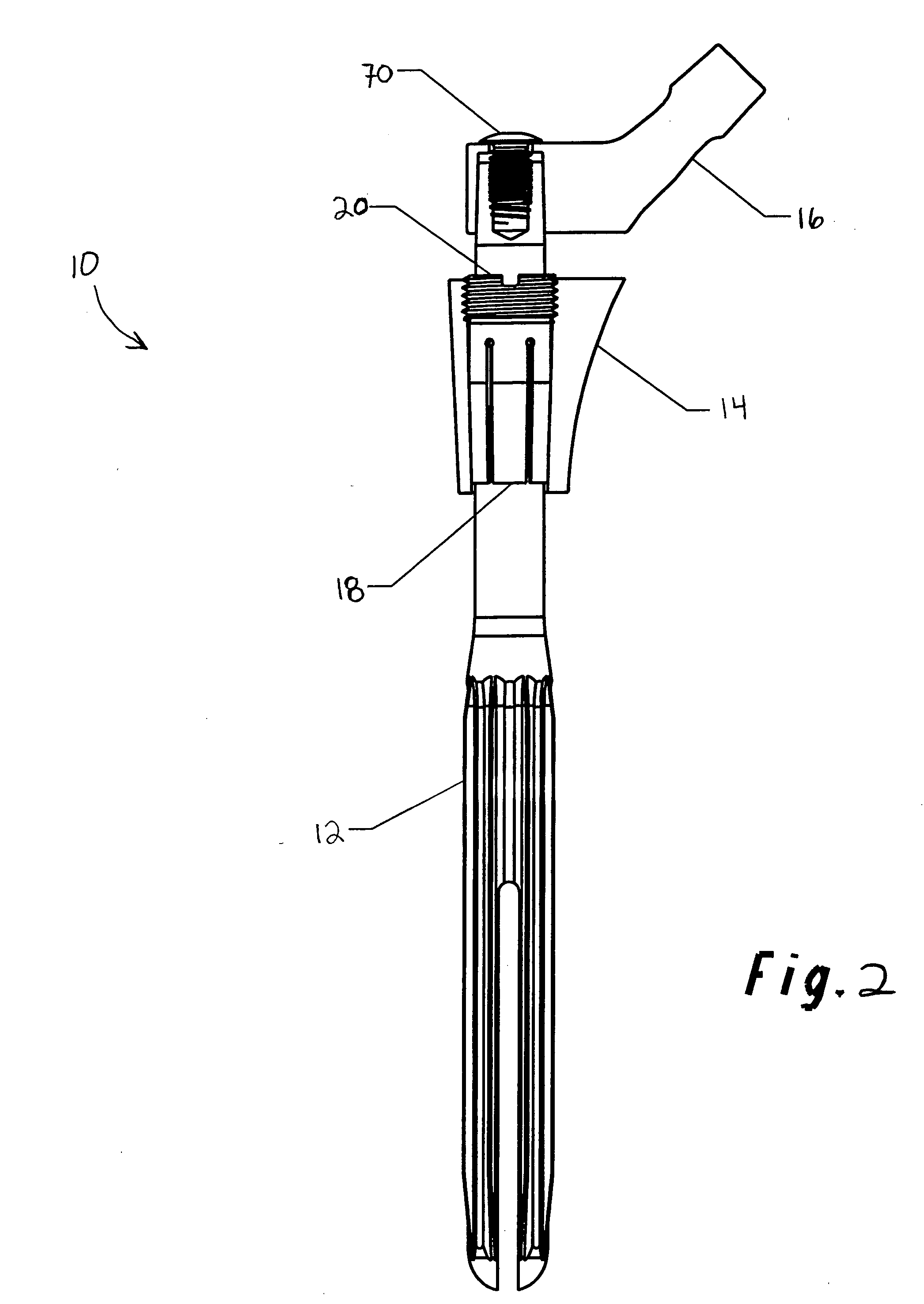Modular hip prosthesis
a hip and hip technology, applied in the field of modular hip prosthesis, can solve the problems of neck adjustment, neck impingement, and inability to individually alter or sized individual components, and achieve the effects of reducing range of motion, reducing leg length, and reducing component wear
- Summary
- Abstract
- Description
- Claims
- Application Information
AI Technical Summary
Benefits of technology
Problems solved by technology
Method used
Image
Examples
Embodiment Construction
[0049]FIGS. 1 and 2 show a modular hip prosthesis 10 according to the invention. Prosthesis 10 generally includes three main components: a stem 12, a proximal body 14, and a neck 16. These components are adjustable with respect to one another and can be assembled and disassembled to form a modular prosthesis. As shown, a collet or sleeve 18 and a locking member 20 form a locking mechanism adapted to affix and lock the proximal body 14 to the stem 12.
[0050] Looking also to FIGS. 3A-3C, stem 12 is a separate component and has an elongated generally straight cylindrical body that extends from a proximal region 30 to a distal region 32. The proximal end includes a threaded cylindrical bore 34 that extends into the body. A locking or tapered surface 36 extends along the proximal region. This surface tapers radially inwardly toward the proximal end. An elongated, straight cylindrical section 38 is adjacent the locking surface 36. Section 38 has a smooth external surface and is adapted to...
PUM
 Login to View More
Login to View More Abstract
Description
Claims
Application Information
 Login to View More
Login to View More - R&D
- Intellectual Property
- Life Sciences
- Materials
- Tech Scout
- Unparalleled Data Quality
- Higher Quality Content
- 60% Fewer Hallucinations
Browse by: Latest US Patents, China's latest patents, Technical Efficacy Thesaurus, Application Domain, Technology Topic, Popular Technical Reports.
© 2025 PatSnap. All rights reserved.Legal|Privacy policy|Modern Slavery Act Transparency Statement|Sitemap|About US| Contact US: help@patsnap.com



